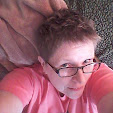
Earlier, I wrote about the three mentors who blessed my life. But, I also had one heroine, and that would be
Mary Catherine Swanson, the founder of AVID. I could search the Internet and dredge up all the articles about her and the awards she's won, but I would rather tell you what I know, or think I know, about her. (Above: me, AVID student Carlo Abcede, and Mary Catherine in Sigonella, Sicily, 2007)
In 1980, long before I ever met her, Mary Catherine was an English teacher in a high school California near San Diego. This school had always been a high-performing school for high-performing college-bound students in the suburbs. Then, integration and busing changed it all. While many of her colleagues felt these new, strange students (many of whom could not speak English) would drag the school down, Mary Catherine felt that they could perform as well and also go to college if things were done a little differently for them. She and a colleague put together a program designed to do just that and started with thirty-two of these non-traditional students. By trial and error and "just plain hard work," the teachers and students employed best practices to make these students successful in college prep courses instead of the "throwaway courses" into which they had been slotted. Four years later, they all had college acceptances, and eventually all of them achieved their dream of a college degree. The "experiment" found a name: AVID (Advancement Via Individual Determination).
Word of Mary Catherine's success spread to neighboring high schools, whose teachers wanted the program, too. It was a teacher-to-teacher program, a "bottom-up" program, which you rarely find in education. Mary Catherine became a teacher of teachers, too. Soon she was elevated to the San Diego County Office of Education and AVID became a countywide program. Still, teachers were the focus. More often than not, it was a teacher who brought the idea to the administrators rather than vice versa. Teachers (like me) wanted to teach this program.Today AVID reaches over 300,000 students in grades 5-12 worldwide. It is the longest-lived educational reform movement in America and the only one started by a classroom teacher. In my thirty-seven years in education, I have seems dozens of programs, maybe hundreds, come and go. Only AVID is still around and still growing.
But, back to Mary Catherine's story . . . what makes her my heroine? She basically turned the whole idea of "tracking students" upside down. From her earliest days, she was a champion for the "forgotten" students, the underdogs, the ones who fell through the educational cracks, the underachievers, the under-represented, and even the unwanted. She saw in them what I had also seen in my first twenty years of teaching: the potential to do so much more! These were kids who were smart and didn't even know it, who could go to college and didn't even know why or how. They took the wrong classes, hung with the wrong crowd, and didn't do any of the things that successful, college-bound kids did. Most often, their parents were not college educated, and many did not even finish high school. But who says certain students can or can't take algebra or Honors English? Why not?
So, what Mary Catherine (and AVID) said to them was, "Look, you are smart! You could go to college, too, if you just did things a little differently." And AVID was born, nurtured, and grown. Mary Catherine fought the battles, with administrators, school boards, teachers, and even parents who resisted this idea. It had never been done this way. Outrageous! Just imagine, putting "those kids" in college prep classes? But AVID was put together brilliantly. As Mary Catherine says herself, "It's just common sense." Nothing in AVID is "new," but the combination of elements makes it powerful. Kids are "accelerated," not remediated. They are put in rigorous courses and then given the support to succeed there. "Hard work makes you smart," says Mary Catherine.
As AVID grew in southern California, Mary Catherine surrounded herself with other teachers, like herself, who were successful with and believed in AVID. They were all teachers, and that is another reason for its success. Teachers believe in other teachers, and when they believe in kids, too, and their potential, they make great AVID teachers. The heart of AVID is the classroom teacher, the one who makes that connection with the kids and their parents. Because Mary Catherine did it, we knew we could, too.
As the program grew, spread, incorporated, and even became gigantic, Mary Catherine remained at the head of it as a teacher-leader. The highlight of every AVID summer institute was her address to the participants, whether in Sonthofen, Germany, or Richmond, Virginia. Thousands were inspired by her story, her ongoing work to grow AVID, and the successes of the students. Mary Catherine was like a rock star at the summer institute, and her presence there today is sorely missed and greatly needed.
I am extremely fortunate to have met this great woman whose philosophy so matched mine and to have become an AVID teacher and then a leader for the program. I even had the privilege of working directly for the AVID Center for a year. Like my mentors, Mary Catherine inspired me and empowered me. To this day, AVID is pretty much like it was designed by her from the beginning, which is why it still works. But without her vision and determination, it never would have happened and the world would be significantly different for tens of thousands of college graduates and for me.
Gloria Ollhoff, Mary Catherine, me, Anne Muse, and Candace Ransing
Wiesbaden, Germany 2000









